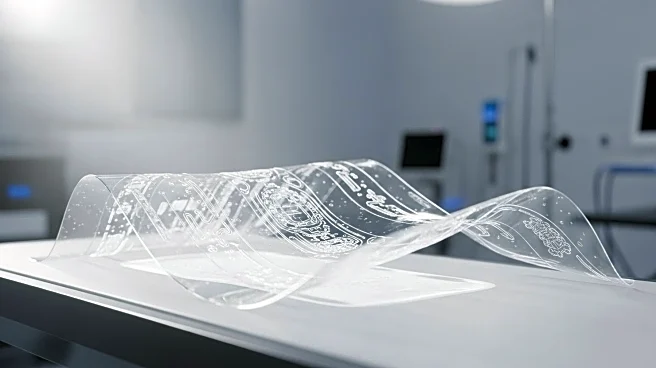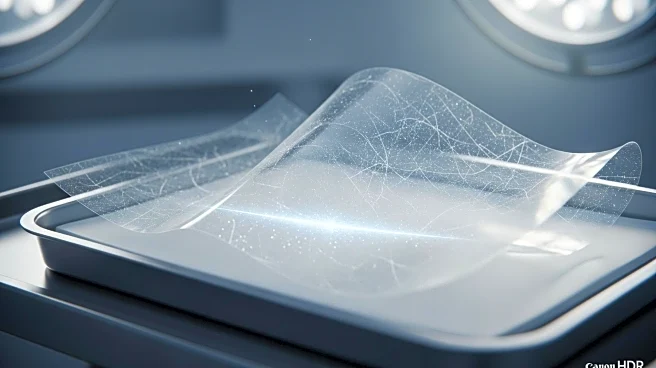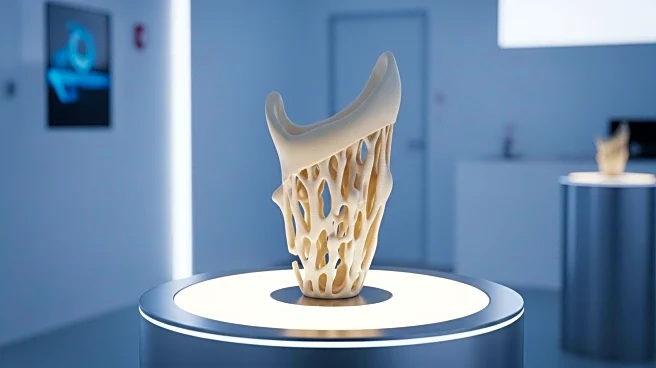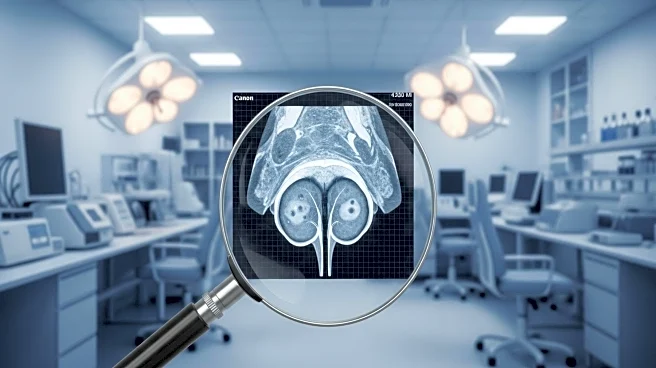What is the story about?
What's Happening?
Researchers have developed a smart polymer film based on hydrogen-bonded organic frameworks, which shows promise in wound healing and infection detection. The film incorporates anthocyanins, pigments known for their color-changing capabilities and biological activities, including antioxidant and antibacterial properties. The polymer's structure allows for drug release and ammonia detection, making it suitable for addressing issues such as diabetic ulcers, chronic wounds, mouth ulcers, and dental infections. The film's effectiveness is attributed to its response to changes in temperature and pH, which are common in wound environments.
Why It's Important?
This development is significant for the healthcare industry, particularly in wound management and infection control. The polymer film's ability to detect ammonia levels and change color in response to pH variations offers a non-invasive method for monitoring wound infections. This could lead to improved patient outcomes by enabling timely interventions. Additionally, the film's antibacterial and antioxidant properties enhance its potential as a therapeutic dressing, reducing the need for frequent dressing changes and minimizing infection risks.
What's Next?
Further research and development are expected to optimize the polymer film's application in clinical settings. This includes refining its sensitivity to ammonia and pH changes and ensuring its stability over extended periods. Collaboration with healthcare providers could facilitate the integration of this technology into existing wound care protocols, potentially revolutionizing the approach to managing chronic and infected wounds.
Beyond the Headlines
The ethical implications of using smart materials in healthcare include considerations of patient privacy and consent, particularly in monitoring health conditions. Additionally, the long-term environmental impact of producing and disposing of such materials warrants attention, as sustainable practices must be prioritized in the development of new medical technologies.
AI Generated Content
Do you find this article useful?














